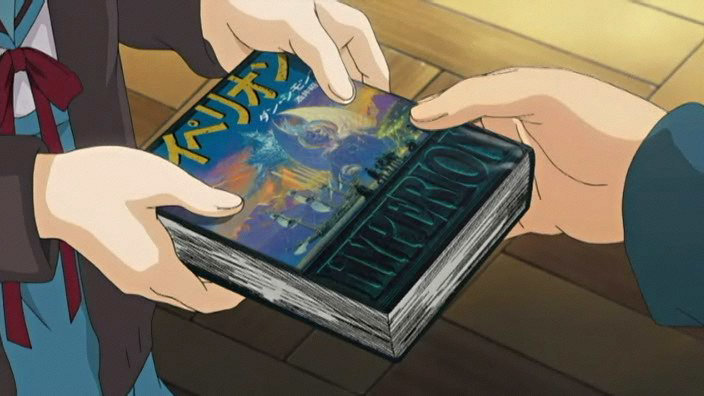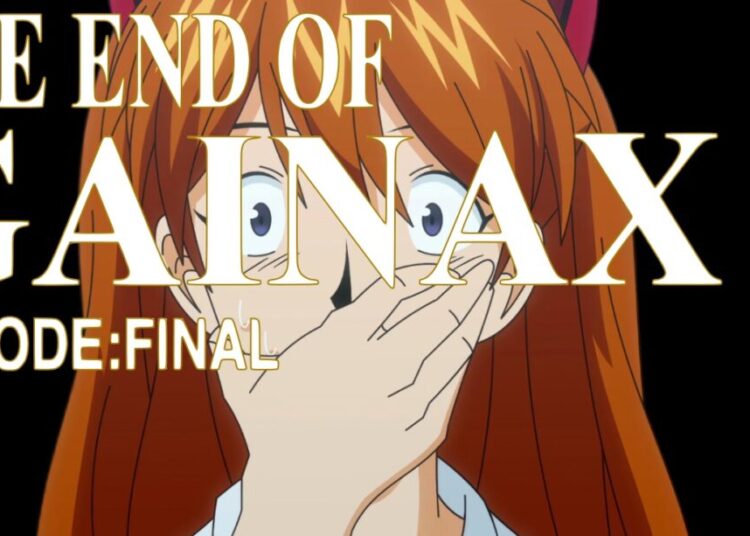Japanese animation is fun for people from all over the world because the stories appeal to us even though we may not have the same cultural background as Japanese viewers. While anime is usually bouncy and fun, it’s amazing how often you can find depth in unexpected places when you dig beneath the surface. One of the students at the school for magic in Zero no Tsukaima is named Tabitha, a cool meta reference to the daughter of Samantha from Bewitched, one of the original inspirations for the “magical girl” genre of anime. The infamous Dirty Pair, known to blow up a planet or two in the course of fulfilling an assignment, turns out to be an obscure (to gaijin) reference to the 1970s-era pro wrestling team Beauty Pair…and celebrated manga-ka Beauty Hair gets his name from the same source. American science fiction crops up in anime from time to time. In The Melancholy of Haruhi Suzumiya, Yuki gives a book to Kyon which (if you freeze the frame at the right moment) can be seen to be The Fall of Hyperion by Dan Simmons, which provided some of the inspiration for the time-travel parts of the story. Similarly, the Gainax classic Aim For the Top: Gunbuster borrows heavily from two of my favorite SF novels, Ender’s Game (kids being trained for interstellar combat with space bugs) and The Forever War (the drama created when people are separated by relativistic time dilation). Even the saucier side of the genre has its deep areas. H-game artist Seishojo is most famous for creating the Bible Black franchise, but did you know that every one of his game titles is actually a reference to the British progressive rock band Crimson King, whose albums include Starless and Bible Black and Discipline? Well, now you do.

Remember Your Roots! Gainax and the Daicon Opening Animation
Writing last week's post about Gainax's sad but expected bankruptcy got me thinking about the early days of the influential...














